How to shift the dew point towards the street. There are three options for placing the TR in the wall. Some facts about dew point
The article describes in detail the method for calculating the dew point. You can also calculate the dew point on the online calculator, it is similar to the calculators on the smartcalc and heat calculation sites of the Russian Federation.
Dew point calculator online
What is dew point
Dew point is the temperature to which the air must be cooled in order for the water vapor contained in it to reach the saturation limit. In other words, in order to relative humidity gas was 100%. Further influx of water vapor or cooling of the air causes condensation to form. At positive temperatures - dew, at negative temperatures - frost, ice or snow.
A practical example is in warm room something is brought in from the frost. The air above the surface of such a thing cools below the dew point (for the current humidity and temperature) and condensation forms on the surface. In the future, the thing is heated to room temperature, and the condensate evaporates. Actually, this is the reason for the recommendation not to immediately turn on household appliances brought in from the cold.
The formula for calculating the dew point is taken from here http://ru.wikipedia.org/wiki/%D0%A2%D0%BE%D1%87%D0%BA%D0%B0_%D1%80%D0%BE%D1%81 %D1%8B
where a = 17.27, b = 237.7, ln - natural logarithm, RH - relative humidity in fractions of a unit, Tp - dew point
According to Wikipedia, in the range from 0 to 60 degrees Celsius, the formula has an error of 0.4 degrees Celsius.
Determination of the temperature of the inner surface of the enclosing structure (windows, doors, stained-glass windows)
Very often the question arises of choosing one or another window or door profile for the manufacture of structures from them with subsequent installation in residential / public / with special requirements premises. To answer this question, among other equal conditions, is the need to determine under what conditions condensation will fall on the profile from the side of the heated room.
In SNiP II-3-79 "Construction climatology" p. 2.11 * there is a formula just for this case.
Let me take a real life example:

Relative humidity for our case should = 55%.
So: Cables = 10.7 0С - this means that if the room is + 20 0С and humidity = 55%, then condensate will begin to form on any surface whose temperature = +10.7 0С or lower.
However, our design temperature on the profile is already lower, and is +5.406 0С. Unfortunately, this means that, at outdoor temperature = -26 0С and indoor temperature +20 0С, the temperature inner surface profile does not reach the normalized +10.7 0C, respectively, there will be condensate. And it will be plentiful.
Conducting compliance checks
In SNiP 23-02-2003 “Thermal protection of buildings”
Clause 5.10 “The temperature of the inner surface of the structural elements of the glazing of windows in buildings (except for industrial ones) must not be lower than plus 3 ° С, and of opaque window elements - not lower than the dew point temperature at design temperature outdoor air during the cold season, for industrial buildings- not lower than 0 °C.”
It suits us!
Interpretation, - for an aluminum profile [glazing structural elements], the temperature of the inner surface must not be lower than +3 0С.
Compare: +5.406 0С > +3 0С. The condition is met. Here is such a legal “loophole” for installing windows made of thermally insulated aluminum profiles and PVC profiles.
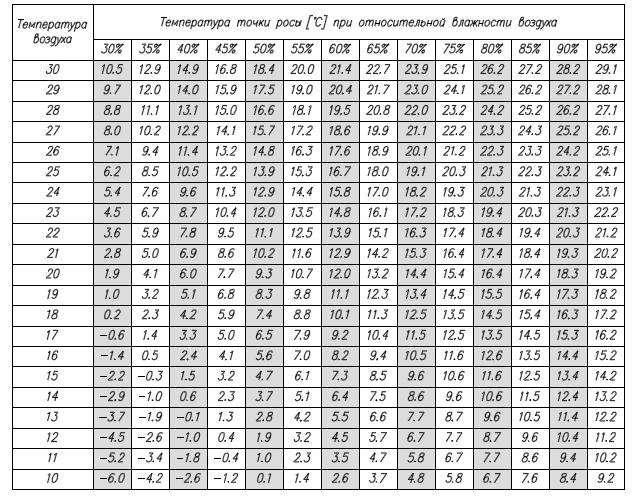

As can be seen from Fig. 2, the increase in the reduced heat transfer resistance occurred to a greater extent due to the installation of a two-chamber double-glazed window (and also to a lesser extent due to the installation of seals), in the KPT-74 frame + sash “node”. Specifications double-glazed window: thickness 36mm, formula: 4 - 12Ar - 4 - 12 Ar - 4I.
As a rule, in all catalogs, the reduced resistance is indicated precisely by “bundles”:
aluminum profile + filling with high heat-saving properties. However, this indicator does not cancel the condensation on the inner surface of the profile.
But on the other hand, according to building standards, this system is suitable for glazing residential buildings in most regions of Russia. Where, the required reduced heat transfer resistance for translucent building envelopes (Ropriv.)<= 0,68 м2 oС/Вт
Formula for calculating dew point
The result is in degrees Celsius.
The formula is correct only for positive temperatures.
Wikipedia writes that this formula is approximate. Whatever it was, but in the regulatory document SP 23-101-2004 “Design of thermal protection of buildings”, there is Appendix P (reference). “Dew point temperatures…” where for T = 20 °C and relative. humidity of 55%, the dew point (Tp) will be 10.69 °C.
I will calculate according to this formula and check the result in this Appendix.
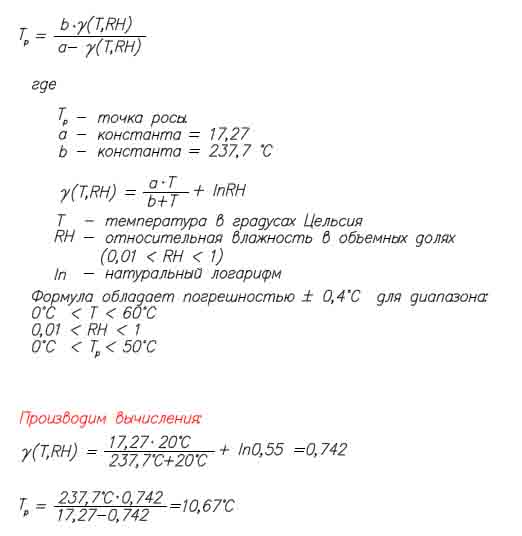
Result obtained using the formula: 10.67 °C
Table value: 10.69 °C
10.69°C - 10.67°C = 0.02°C
A discrepancy of two hundredths of a degree is so insignificant that it can be neglected.
This formula can be used.
Features of internal and external wall insulation
The most effective insulation option is considered combination of internal and external insulation, but subject to a number of important points.
When all the walls of the house are insulated from the inside, the building envelope is not able to accumulate heat, which can subsequently lead to the formation of various fungi. This is due to the fact that condensation will form between the inner wall and the thermal insulation layer. The disadvantage of only internal insulation is that the wall of the building itself will be located in a zone of lower temperature, and everything will also be affected by negative atmospheric phenomena.
All these moments are absent when warming the house from the outside. In addition, the installation of a heat-insulating structure on the outside prevents the negative impact of the environment, and this, in turn, prevents the appearance of fungus and prolongs the life of the building itself. For houses with a small area, external insulation saves an already small living space. The only disadvantage of warming the house from the outside is the seasonality of the work, since in winter it is impossible, and not recommended, to carry out such work.
When combining two methods of insulation, that is, both internal and external, it is important to know and observe certain proportions. Each material used for building insulation has its own specific coefficient of thermal resistance, and materials with a higher index (three times) are used for external insulation.
An important point in protecting the building from the accumulation of condensate is the correct location of the heat-insulating material. On the outside, on the cooled surface, porous materials are placed that easily pass water vapor, and on the inside, a denser material is laid. This will allow the condensate to evaporate freely, and at the same time all the heat will remain in the house.
Where will the point be? dew
There can be three options for wall construction: without insulation, with outer and inner lining. Consider where the dew point can be in each of these cases?
- Construction without insulation, then the dew point is located:
- inside the wall closer to the outer surface;
- inside the wall is shifted to the inner surface;
- on the inner surface - indoors, the wall will remain wet throughout the winter period.

2. There is an external insulation, then the dew point is:
- inside the insulation - this indicates that the calculation of the dew point and the thickness of the insulation were carried out correctly, and the wall in the room will be dry;
- any of the three cases described in paragraph 1 - the reason is the wrong choice of insulation and its characteristics.

3. Made the inner lining, the dew point will be:
- inside the wall closer to the insulation;
- on the inner surface of the wall under the sheathing;
- in the heater itself.
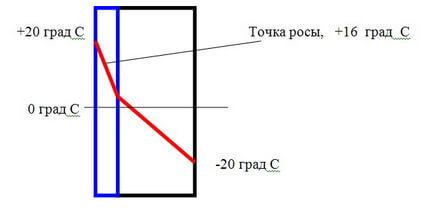
From the above, it becomes clear that the location of the dew point also depends on such characteristics of the fence as temperature and vapor permeability. Most modern heaters practically do not allow steam to pass through, therefore external wall cladding is recommended.
If you choose internal insulation, then the following conditions must be met in order to:
- the wall was dry and warm;
- the insulation had good vapor permeability and a small thickness;
- ventilation and heating functioned in the building.
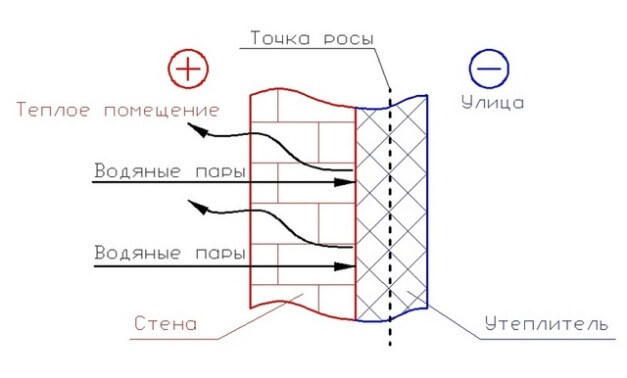
Knowing the possible zones of condensate formation, i.e. the location of the dew point, it is possible for certain climatic zones to choose a type and material of insulation that will not create conditions for damp walls inside the house.
There is an opinion that the house should be insulated from the outside, and the insulation in all respects must comply with GOST. Then the dew point will be inside the skin, that is, outside the house, and the interior walls will be dry in any season. That is why external insulation is more profitable than internal.
When it is possible or impossible to insulate the walls from the inside
Now we will analyze when it is possible to insulate the wall from the inside, when it is impossible, what it depends on and how it depends. What is this “no”, what are the consequences.
The main "possible or impossible" is what will happen to the wall after it is insulated from the inside. If the wall is dry, you can. If the wall is dry, and only with a sharp, unexpected (which happens once every ten years) cold snap can get wet, you can try to insulate from the inside (at the discretion of the customer). If the wall is consistently wet throughout the winter settlement period (with the usual winter temperature in the region), it is impossible to insulate from the inside. As we have already found out above, these consequences depend on the position of the dew point. And the position of the dew point in the wall can be calculated, and then it will be clear (BEFORE insulation) whether it is possible or not to insulate a particular wall from the inside.
Now a little discussion on the topic of what affects the possibility of insulation from the inside, and how it affects. This part of the article is caused by questions from readers of the following nature: “Why can the reader in the next branch be insulated from the inside, but I can’t, because we have the same layout of the apartment with him (further options), or the houses are built from the same material, or one city of residence, or the same thickness of the wall and so on.
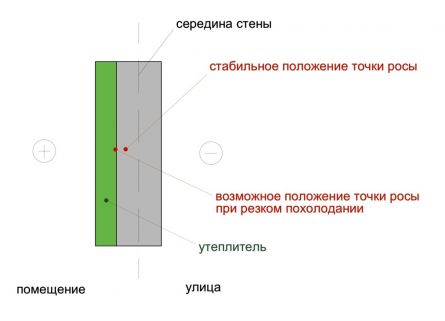
Let's figure it out. As we have already found out above, the consequences of internal insulation depend on:
- dew points (condensation temperature);
- position of the dew point in the wall before and after insulation.
In turn, the dew point (temperature) depends on: the humidity in the room and the temperature in the room. And the humidity in the room depends on:
- Mode of residence (permanently or temporarily);
- Ventilation (both inflow and exhaust, are they enough according to the calculation).

And the temperature in the room depends on:
- The quality of the heating;
- The degree of insulation of other structures of the house / apartment, except for walls (ceiling / roof, windows, floor).
The position of the dew point depends on:
- thickness and material of all layers of the wall;
- indoor temperature. What it depends on - found out above;
- outside temperature. It depends on whether the street is outside or another room, as well as on the climatic zone;
- indoor humidity. On what it depends, found out above;
- humidity outside. It depends on whether the street is outside or another room (and on the mode of operation of this room), as well as on the climatic zone.
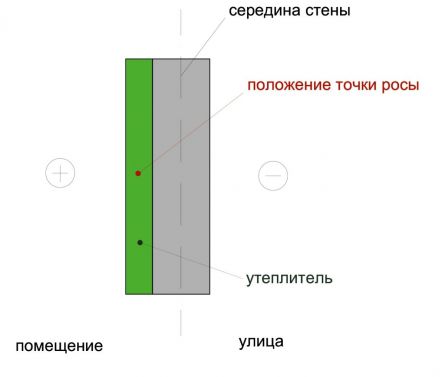
Now, if we collect ALL factors of influence on dew point and dew point position, we will get a list of influencing factors that must be taken into account when deciding whether it is possible or not in a particular situation to insulate a particular wall from the inside. Here is a list of these factors:
- mode of residence in the premises (permanently or temporarily);
- ventilation (both inflow and exhaust, are they enough according to the calculation);
- the quality of the heating in the room;
- the degree of insulation of other structures of the house / apartment, except for walls (ceiling / roof, windows, floor);
- thickness and material of all layers of the wall;
- indoor temperature;
- indoor humidity;
- outside temperature;
- humidity outside the room;
- climatic zone;
- what is behind the wall, street or other room (its mode of operation).

It becomes clear that there may not be two identical situations for warming from the inside. Let's see how (approximately, without specifics) the situation looks like when insulation from the inside is possible:
- permanent residence,
- ventilation is carried out according to the norm (for this room),
- heating works well and is carried out according to the norm,
- other structures are insulated according to the norm,
- the wall to be insulated is thick and warm enough. According to the calculation for additional insulation for it, it should not be more than 50 mm (polystyrene, cotton wool, EPS). In terms of heat transfer resistance, the wall “does not reach” the norm of 30% or less.
To simplify it completely, it turns out like this: the warmer the region, the better your heating and ventilation, the thicker and warmer the wall, the more likely it is that you can insulate from the inside. I think it is clear that in each specific case you need to consider your "incoming data" and then make a decision.
Everything that is written above gives the impression that there are very few cases when internal insulation is possible and not harmful. It really is. In our experience, out of 100 who came up with the idea of internal insulation, only 10 can do it without consequences. In other cases, you need to insulate the outside.
Based on materials from the sites stomasterov.ru, econet.ua, kapitel-1.ru, bane.guru,
During the construction of a building or its individual parts, the concept of dew point often arises before the developer.
This term has been heard by everyone who has ever changed windows, insulated walls or changed the heating system in their homes.
So, let's consider what the dew point is, why you need to know its location in the wall and how it can be determined using the available tools at hand.
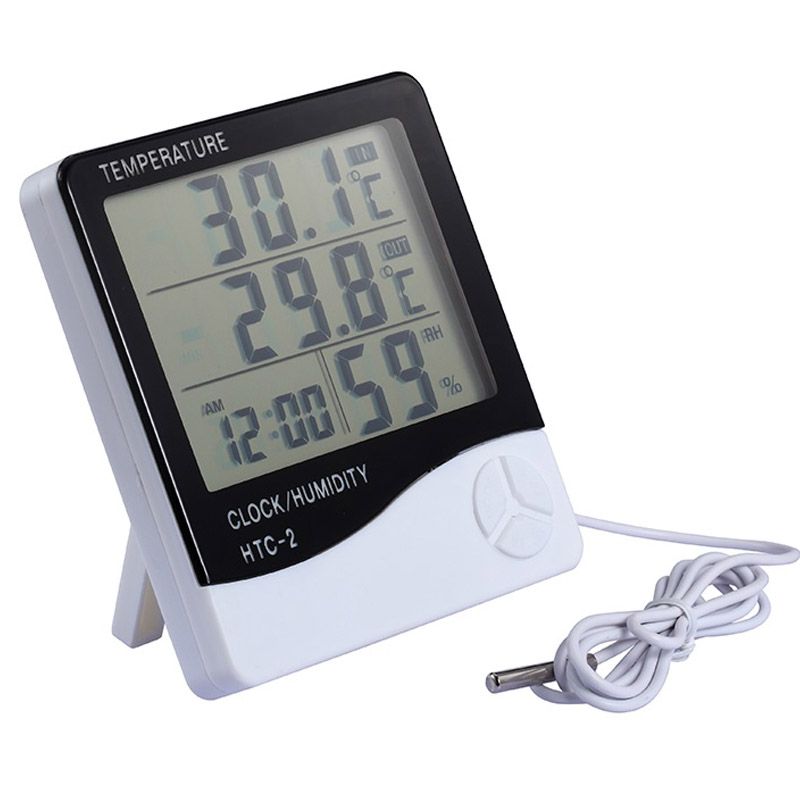 At high temperature and humidity, cold walls are covered with dew
At high temperature and humidity, cold walls are covered with dew
In simple terms, the dew point is the moment when the internal temperature of the room and humidity significantly exceed the temperature of the floor surface. At the same time, moisture from the air inevitably condenses on the surface of the wall. This moment is influenced by:
- indoor air humidity;
- temperature of walls or ceilings;
- temperature inside the building.
If the room is humid and hot, then dew drops immediately form on a cold glass.
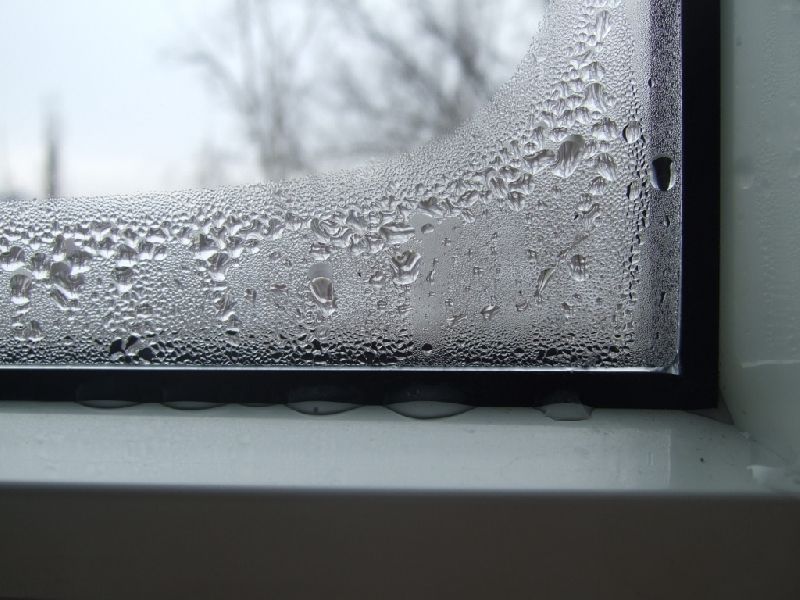 Why is this term used in construction? Any fences: a wall or a window is the border with the outside world, which means that their surface temperature differs from the average in the room.
Why is this term used in construction? Any fences: a wall or a window is the border with the outside world, which means that their surface temperature differs from the average in the room.
This means that in the place where the dew point is located on the wall, moisture will regularly accumulate. The determination of the dew point is influenced by:
- characteristics of materials used in construction and their thickness;
- the place of installation, the number of layers and the quality of the insulation.
It is important that the dew point is on the outside of the building wall. Otherwise, we get a constantly wet surface and, as a result, the formation of mold, fungus, the destruction of the decorative layer and the bearing characteristics of the structure.
Dew point calculation
Many owners of square meters are interested in the question of how to independently calculate the dew point in the wall. Purely theoretically, there is nothing complicated in this, especially if you are a mathematician, physicist, or just remember the school curriculum well. 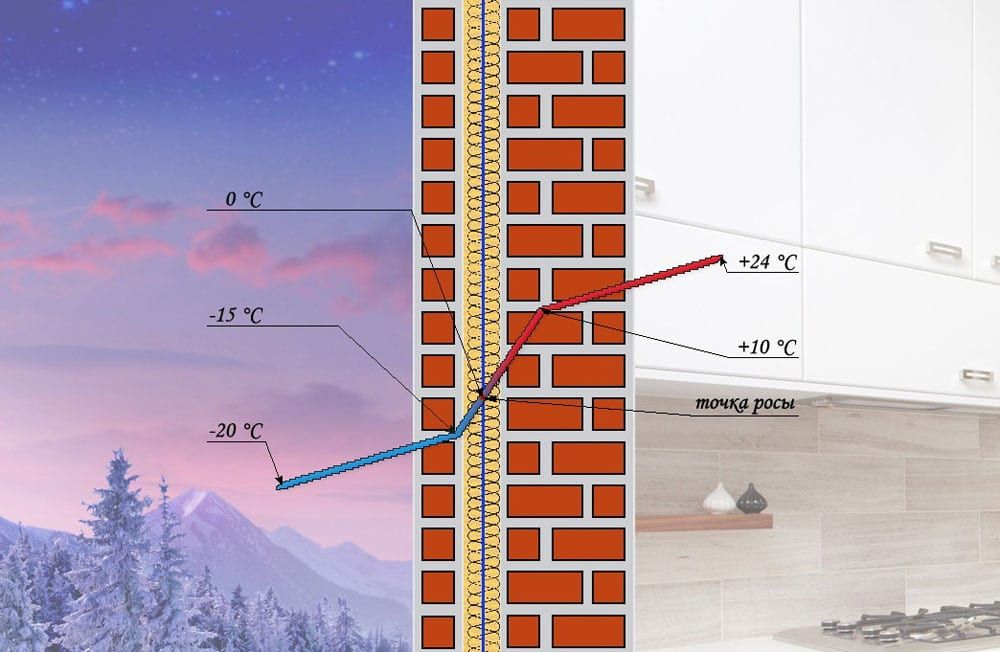
To do this, you need to use the formula:
TP = (b * λ(T,RH)) / (a * λ(T,RH)), where:
- TP is the desired point;
- a is a constant equal to 17.27;
- b is a constant equal to the value 237.7;
- λ(Т,RH) – coefficient, which is calculated as follows:
 λ(Т,RH) = (а*Т) / (b*T+ lnRH), where:
λ(Т,RH) = (а*Т) / (b*T+ lnRH), where:
- T is the internal temperature of the room;
- RH - indoor humidity, the value is taken in fractions, not in percentages: from 0.01 to 1;
- ln is the natural logarithm.
If in school you were more into playing basketball or reading Dostoevsky than logarithms, don't be discouraged. Everything has already been calculated in the thermal protection data table numbered SP 23-101-2004, compiled on the basis of measurements and calculations by scientific and design organizations.
The most likely values in average Russian conditions are shown in the table below:
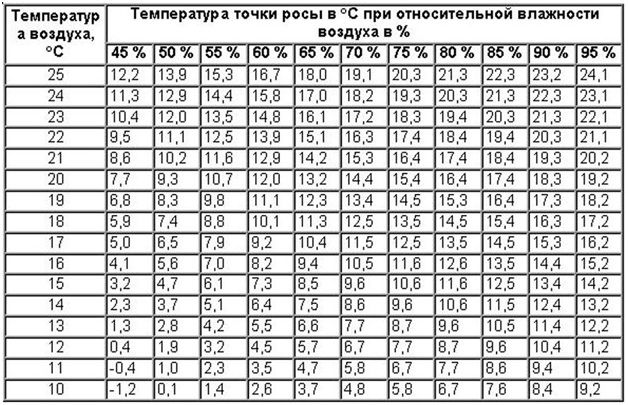
Practical use
 Knowing the value of the dew point value is important when planning the insulation of a building.
Knowing the value of the dew point value is important when planning the insulation of a building. In practice, the meaning of the dew point term is important when insulating the walls of a building. To ensure optimal thermal insulation characteristics of the enclosing parts of the building, it is necessary to know not only the value of the dew point, but also its position on the surface or in the body of the wall.
Modern construction methods allow 3 options for carrying out work, and in each case, the point of condensation may be different:
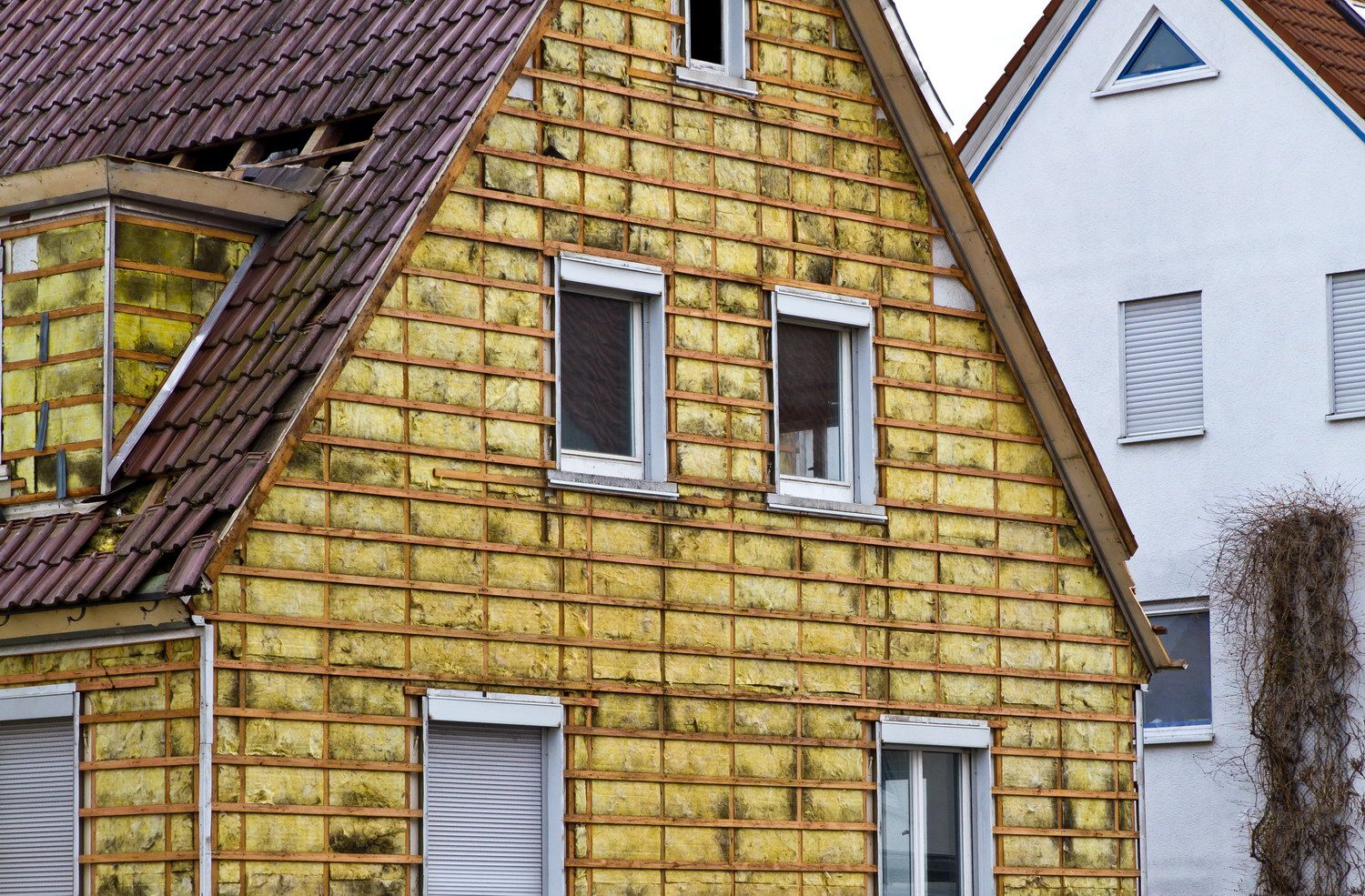
An exception in the case of the same type of wall will be, perhaps, wooden log cabins. Wood is a natural material with excellent quality characteristics of low thermal conductivity and high vapor permeability. In such buildings, the dew point will always be located closer to the outer surface. Wooden log cabins almost never require additional thermal insulation work.
The latter option is highly undesirable and is performed only when there is no other way out. To learn how to properly insulate the walls of the house, see this video:
If, nevertheless, the insulation is laid inside the building, then additional measures should be taken:
- leave an air pocket between the thermal insulation layer and the cladding;
- provide for the arrangement of ventilation openings and heating of the room with an additional decrease in the level of humidity.
What to do to bring the dew point out of the house?
What is the right thing to do when the house has already been built and is in operation, and the walls have begun to dampen? All of the above tells us that it is necessary to change the factors that affect the dew point. This means that you can either increase the heating in order to reduce the level of humidity, or reduce the difference in the temperature of the coatings, namely, lay a layer of external thermal insulation.
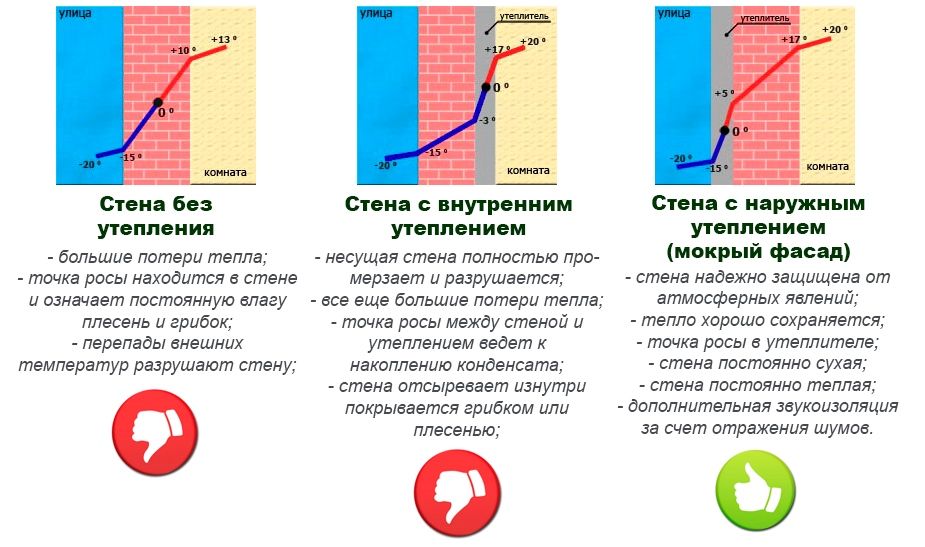 Wall insulation options
Wall insulation options Why do we insulate the walls from the outside? First, it's convenient. Secondly, in this case, the temperature of the external environment will not have a wall of the house, but a layer of thermal insulation. The temperature drop curve will become flatter and the dew point will actually move to the edge of the thermal insulation layer. For important tips on this issue, see this video:
The thicker the coating, the more likely it is that the dew point will shift into the thermal insulation body outside the wall of the house. As a result, houses that are well insulated from the outside last longer and do not require large heating costs.
Thermal insulation material
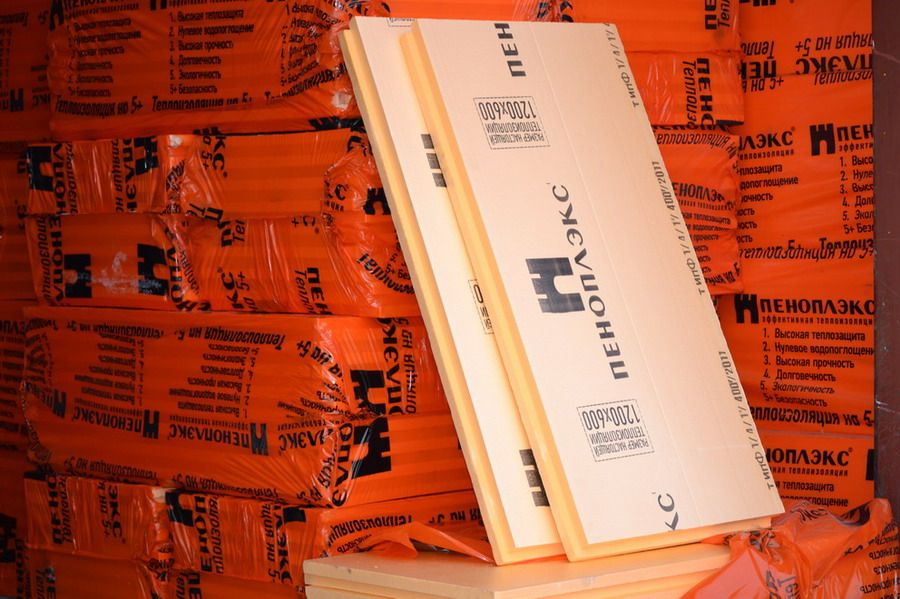 Penoplex is recommended for external wall insulation
Penoplex is recommended for external wall insulation As we have already figured out, it is better to use a heat-insulating material that can be mounted on the outside of the building. As a rule, we are talking about foam or mineral wool.
Material based on mineral wool has good vapor permeability. At the same time, moisture is partially retained in the insulation and flows down under the action of gravity. This circumstance does not threaten the insulation, since basalt or glass fiber is resistant to moisture.
It would not be out of place to arrange a layer of waterproofing at the bottom of the building to prevent the destruction of the foundation.
Penoplex materials are vapor-tight, so when installing them, an air pocket should be left to remove moisture from the inner surface of the material.
Subject to these conditions, we can talk about the safety of the walls and the effectiveness of insulation.
In climatic zones, in which conditions change depending on the time of year or time of day, builders face the difficult task of choosing and calculating the right amount of building materials for arranging a home and creating a comfortable microclimate in it. There is a question of protection from sub-zero temperatures, winds and humidity. The answer is a simple word - warming. But its effectiveness directly depends on the dew point, which shows how much water vapor is in the air.
Dew point: a bit of history
For a long time, people who did not even think about determining some kind of dew point built their own dwellings in order to relax in conditions of complete silence, when neither insects nor animals disturb you, not to mention weather phenomena. If a simple house made of natural materials is enough on a tropical island, since this area maintains a comfortable air temperature all year round, then the situation may be completely different in another climatic zone, where the indoor temperature differs from the outdoor temperature by several tens of degrees. How to maintain comfortable conditions in the home under such weather conditions? That's right, build walls from the appropriate material that can withstand all these misfortunes, and insulate them. But this is not enough - you still need to know what the dew point is, and learn how to calculate it correctly. There are building codes in which different values are calculated for any region, including the thickness of the building walls for a certain material, the thickness of the insulation for a certain wall thickness, etc. Unfortunately, some customers, in order to save materials and reduce construction costs, take these indicators at the lower limits. Here they can stumble upon "underwater reefs". In an ever-changing climate, there is no guarantee that the frost will not be too severe this winter. As a result, if during construction the determination of the dew point was not correct or was not carried out at all, due to changes in temperature and humidity outside, the walls inside the room begin to get wet, and mold and fungus appear over time.
Our ancestors tried many building materials that provided reliable protection from frost and snow, water and rain in spring and autumn and heat in summer in regions with severe winters. It was enough for them to build a hut with thick breathing walls (with a margin, so to speak), put a good stove inside, ensuring the correct circulation of warm air, and the job was done. In such a dwelling, any person felt comfortable, without even wondering about the calculation of the dew point. But time passed...
With the advent of large cities and their development, people began to build multi-storey buildings. They began to use new materials in construction. Construction firms and private traders began to save on material, being guided during construction by the lower limits of the values of building regulations. In addition, in the cold and winter season in apartment buildings (and not only) they began to use not heat from the stove, but central heating or individual heating systems that work on the same principle.
Why do you need the correct calculation of the dew point when insulating a house?
Have you ever seen an uninsulated house in which (especially when it is minus outside) the walls near the ceiling or floor are damp? What is this moisture? Turns out it's dew. Indoors? Yes! And not only indoors, but also in the walls, in the floor. Humidity, temperature and atmospheric pressure. When these three values change, precipitation occurs. Precipitation comes in the form of rain, snow and dew. Let's talk about the latter in more detail.
As a result of the contact of a cold surface and humid warm air, its humidity drops, and condensation begins to form on this surface. This process can be observed on the walls of a glass with a cold drink.
The temperature at which this condensation occurs is called the dew point temperature (DTP). At a certain value of temperature and atmospheric pressure, with an increase in air humidity, the dew point value, which is expressed in degrees, also increases. The walls of a glass of ice are at dew point temperature. Thus, this concept is used to somehow indicate the content of water vapor in the air. Having calculated everything correctly, you will find out the temperature value at which the humidity of the air reaches 100 percent. If this temperature is equal to the air temperature (it cannot exceed it), then fog or rain is formed (depending on pressure). If it is much less, there will be no precipitation.
So, if there is moist air and an object whose temperature has a TTR, moisture will accumulate on this object. That is why it is necessary to determine the dew point during various construction works, including the erection of walls, their insulation, pouring self-leveling floors, thermal insulation of roofs of buildings, etc. For example, at , if the temperature outside is such that the dew point is in the area from the center of the wall, closer to its inner edge, you will see a wet spot in your room until the temperature outside rises. If this continues for some time, a fungus will form on these surfaces, loving the combination of moisture, heat and carbon dioxide (which we exhale from the lungs). Now we have come to the main point.
Dew point determination
Example #1
Let's take, for example, a very common case in construction: the installation of self-leveling floors. The humidity of the air in the room and the temperature of the substrate to be coated play an important role. After all, if the floor has a TTR, the moisture released in it can adversely affect the strength of the future coating - all kinds of deformations appear, which soon turn into delamination of the coating. To avoid this, it is necessary to measure the humidity in the room (with a hygrometer) and the air temperature. We calculate the dew point using the formula: 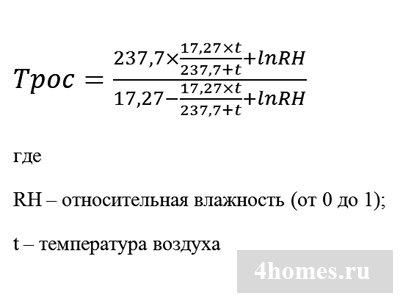
Or based on the finished table:
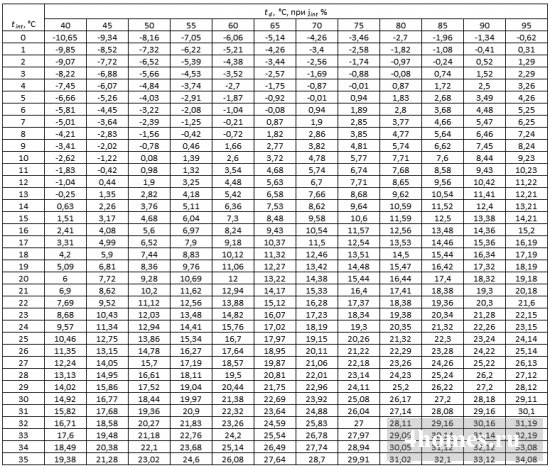
Click to enlarge
For example, if the dew point turned out to be 11 degrees Celsius, and the base temperature is not higher than the dew point by 5 degrees, it is not recommended to install a self-leveling floor.
Example #2
Arrangement of external insulation of the house with foam plastic or. In this case, the situation is much more complicated. After all, you need to measure the temperature and humidity outside and inside the room in all sorts of combinations that happen in your climate zone. To help builders, the norms SP 23-101-2004 "Design of thermal protection of buildings" and SNiP 23-02-2003 "Thermal protection of buildings" have been developed. Also, manufacturers of insulation systems provide on their websites special calculators for calculating the thickness of the insulator, depending on the parameters of the walls and climatic conditions, so that the dew point does not end up in an unnecessary place. The dew point in a wall can move along its thickness as the temperatures inside and outside the room change. For example, if the temperature inside the room is stable, and it gets colder outside, then the dew point will move along the thickness of the wall closer to the room.
The temperature of the object on which the steam will begin to condense, i.e. dew point depends mainly on two parameters:
- air temperature;
- air humidity.
For example, at an indoor temperature of +20 degrees and a humidity of 50%, the dew point temperature will be (approximately) +12.9 degrees. If an object with this temperature or below appears in the room, condensation will form on it. For example, when a refrigerator is opened, dew from the incoming warm air falls out inside it. It looks like "fog coming out of the fridge".
If it is cold outside, then somewhere in the wall there will be a temperature at which steam will begin to condense, and at this point there will be moisture. If the wall is thin, "cold", and its inner surface cools to 12.9 degrees or less (at the specified values of temperature and air humidity), then dew will fall on it, it will become wet, and very quickly acquire mold.
When insulating walls, house structures, it is useful to calculate the dew point for the highest and lowest values of humidity and temperature in order to know in what boundaries of space the dew point will move when these parameters change.
Dew point calculation
In calculations of the dew point and the thickness of the insulation, some parameters are not taken into account - pressure, air velocity, material density ... Therefore, we can only talk about approximate values. But, this is not critical when it comes to determining the thickness of the insulation.
To determine the dew point in the wall, the easiest way is to use the tables of ready-made approximate values, and do not try to do the calculations yourself. Moreover, you should not trust self-made programs from the Internet, they often do not take into account the parameters and give false values, and sometimes on the principle of random numbers.
Below is a table of calculated dew point values depending on air temperature and humidity. These are approximate values, since the influence of other factors is not taken into account.
What values should be taken to calculate the dew point
Usually the temperature inside the room is 22 degrees, more often it is lower near the floor, and reaches 27 degrees under the ceiling. For the central regions, the minimum outside temperature is considered to be -15 degrees, (short-term drops in temperature to -20 - -25 degrees are allowed).
For the southern regions - -7 degrees, with a short-term decrease of -15 - -20 degrees.
(You can choose the minimum temperature yourself - what temperature does it keep in winter all the time? To what values does it drop for a short time?)
The humidity in the room is usually taken as medium (but not small) - 50%. There is usually some reserve here, since often in winter the air in the room is drier, due to actively working heating, - 30 - 40%. But many homes are struggling with dry air by installing humidifiers and planting plants. The optimum humidity is 50%, it is also calculated.
In autumn and spring, for passing heaters, steam will go in the opposite direction - from the street. To calculate the "demi-season" for vapor-permeable heaters, the humidity must be taken about 90%.
Where should the dew point be?
The insulation of the fence is considered “normal” only when the dew point in cold weather is mainly (!) In the insulation and does not shift into the wall.
What does "mostly" mean?
At maximum negative temperatures, which usually last several days, a week, and occur periodically, the dew point can also shift into the wall.
For a wall made of dense heavy materials, there is nothing dangerous in this. But for a wall made of porous materials, which as usual very well pass steam and absorb moisture, the appearance of the dew point should be short, especially when they are combined with vapor barrier insulation. Such walls require the most insulation, especially considering that they are warm in themselves. To shift the dew point, you need 2 times more insulation. With vapor-transparent heaters, they combine much better, since moisture can be removed here, but only if the insulation is well ventilated.
Condensation on front doors
The first reason for the formation of condensation on the front door is based on high humidity when the figure exceeds 55%. Then the collection of condensate occurs on the surface, where the temperature is slightly below the "dew point". In winter, such a surface is precisely the front door.
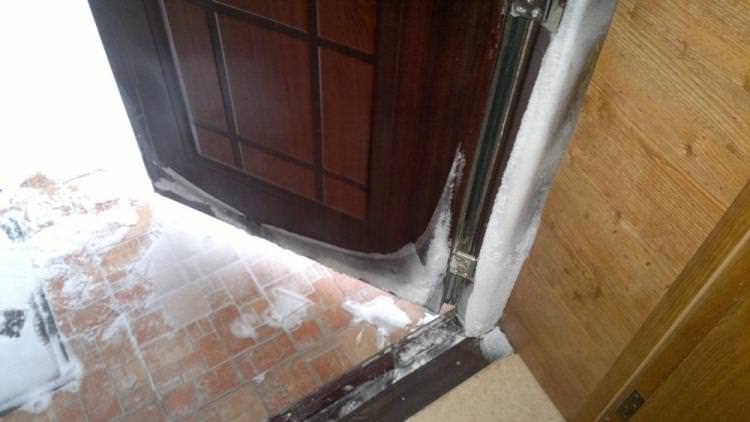
It is important to adhere to indoor air humidity of about 45% for the health of residents. The humidity of the indoor climate is affected by both ventilation devices and the temperature of the heated air in the room.
The second reason for condensate is hidden in low thermal insulation - a metal door is more prone to a large amount of condensate due to poor sealing between the metal sheet and the frame. In a typical embodiment, there is not enough air outflow for those purposes, so that vapors come out, but it is quite enough for their deposition on the surface.
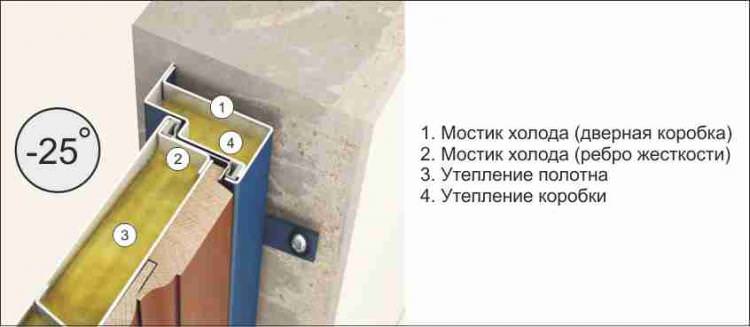
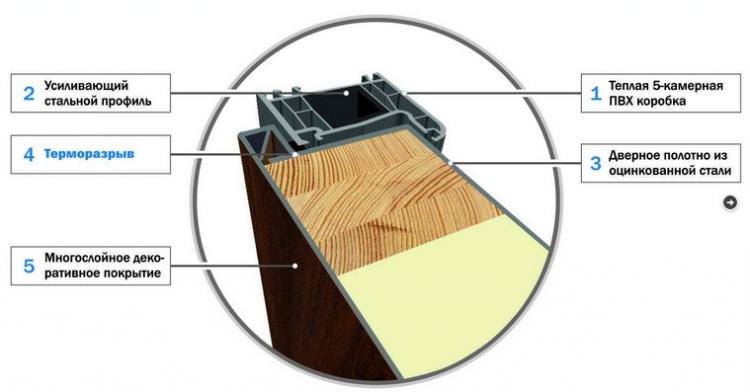
Example of a thermal break door
Peculiar "cold bridges" with an increased thermal conductivity on the front door are concentrated mainly on the door handle, peephole, feigned part. Vulnerable freezing points especially concern metal doors, in which heat transfer is increased.
Ways to eliminate condensation on the front doors
The way to get rid of condensate is to ensure the inflow of dry fresh air from the outside and the outflow of vapors from the enclosed space. It is possible to install a “warm curtain”, which will heat the door with heated air. The surface temperature of the door leaf will rise and the dew point will shift.
Insulating the door leaf will not eradicate condensation problems. Condensing moisture settles due to the large temperature difference between outside and inside. It is recommended in this embodiment to equip an unheated vestibule at the entrance.
Not superfluous above the entrance will be the equipment of a visor that protects the door from direct exposure to the rays of the sun and precipitation. It is recommended to open the metal sheet of the front door with special powder polymers. It is better to fill all hollow elements in a metal door with foam in order to exclude the manifestations of cold bridges.
Condensation on windows
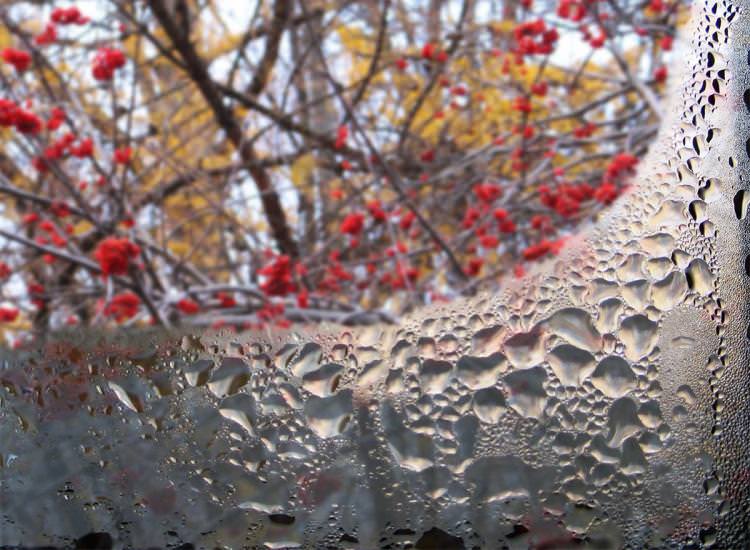
Very often manufacturers of modern windows have to accept claims that their customers' windows fog up. The formation of condensation on the windows is not only aesthetically unsightly, but also threatens with waterlogging of wooden structures and, as a result, the formation of moldy fungus. Let's look at the possible causes of condensation on the windows.
Condensation is a liquid that has overcome the dew point and dropped out in the form of droplets on the window.
Well, if this happened on windows, then only windows and their manufacturers are to blame. Logically, this is correct, but if there is no water in the window itself and it cannot emit it, where does the condensate come from?
Causes of fogging windows and how to fix them
Single-chamber double-glazed window - you should not save on double-glazed windows, as they say, the stingy pays twice. An ordinary double-glazed window with one chamber (not energy-saving) will certainly allow you to get acquainted with the condensate on the windows. To eliminate the cause of fogging, it is necessary to replace the double-glazed window, not the entire window, but only the double-glazed window.
The window sill closes the battery

Not properly
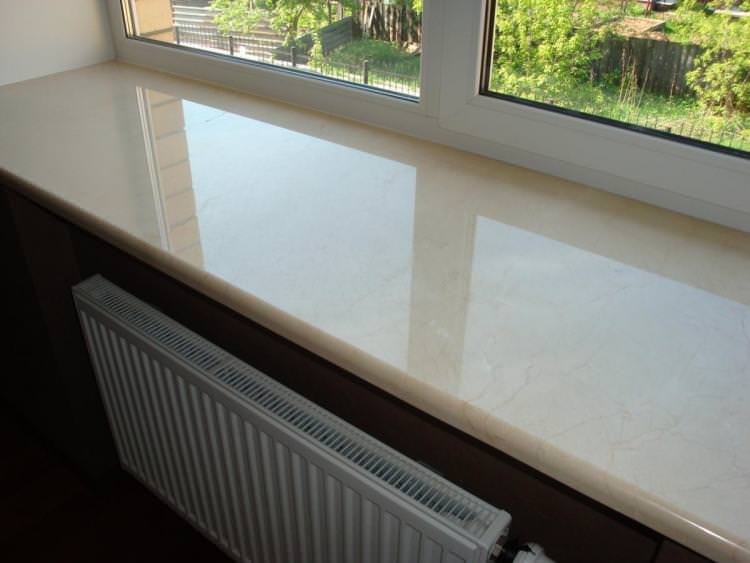
Correctly
Heating radiators blow warm air over the window and if they are blocked by a window sill, then there will be no circulation of warm air - the window will always be cold, as a result, condensation will appear on it.
You can get rid of the appearance of condensate by reducing the size of the window sill or by moving the battery outside the window sill. If there is no possibility for such options, you will have to look for an additional source for glass heating.
Poor ventilation
Ventilation grilles often tend to get clogged with all sorts of rubbish - dust, cobwebs, after which they stop drawing in moist air, moisture settles on the glass and the windows begin to cry. And in the houses of the old building, the ventilation ducts are almost always clogged and never cleaned.
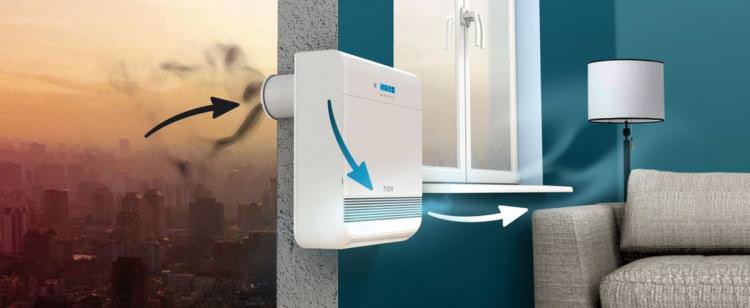
An example of air flow organization: ventilation and air ionization
You can eliminate the formation of condensate by cleaning or replacing the grilles, and in the case when the ventilation is clogged and there is no way to clean it, additional ventilation will have to be done.
Indoor plants on the windowsill
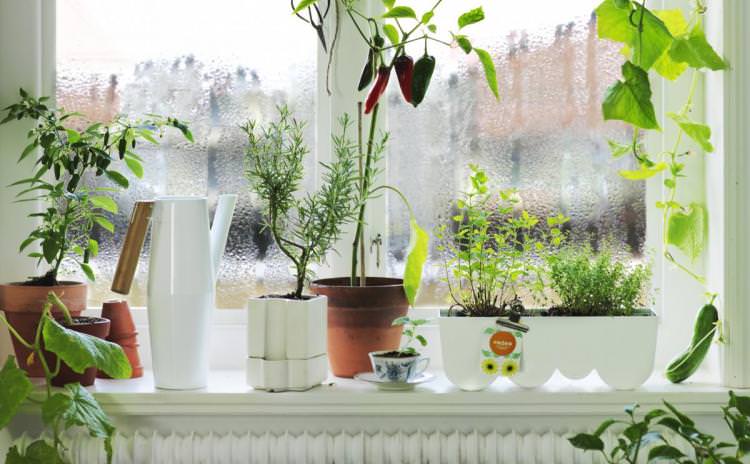
Indoor flowers emit moisture, and after watering, some of the water evaporates and can settle on the double-glazed window, as a result of which the windows fog up. If the reason for the condensation on the windows is flowers, just remove them from the windowsill.
Windows not switched to winter mode
Compared to winter mode, windows in summer mode have less thermal insulation. Therefore, the inside of the double-glazed window is cooled more strongly. Don't forget to change your windows to winter mode.
If it starts to blow from a plastic window, or the sash catches when opening or closing, or the window freezes in the winter, or the plastic window does not close well - as a rule, this means that your window needs adjustment.

Adjustment of a plastic window may also be required if you want to switch the window to winter or summer operating modes.
All we need for this is a hex key to adjust the fittings.
Transfer of plastic windows to summer and winter operation
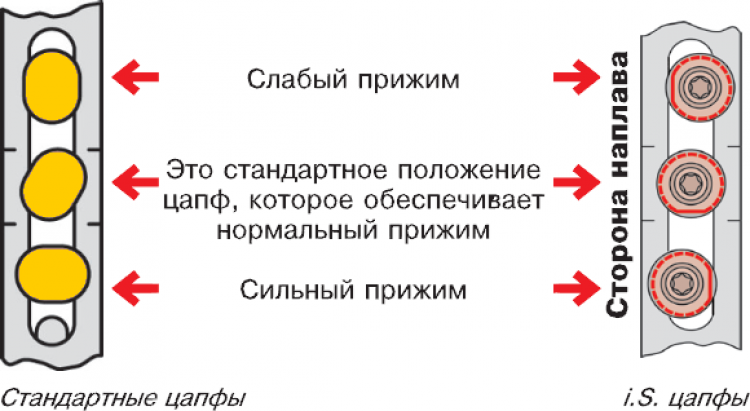
The degree of sash pressure on the plastic window is adjustable - in winter, a tighter pressure is required.
In summer, the clamp should be loosened, as this prolongs the life of the sealing rubber and ensures the flow of fresh air into the room.
In the event of a draft, the solution may be to switch the window fittings from summer to winter mode, in which the window pressure is increased.
Along the perimeter of the plastic window sash there are clamps that ensure the tightness of the sash to the frame.
The clamps are made in the form of eccentrics and have a recess for a 4 mm hex key.
The sash pressure density is adjusted by rotating the eccentric.
- Winter mode (more snug fit). To switch to winter mode, all eccentrics must be turned so that the longest radius is directed towards the room when the sash is closed
- Summer mode micro-ventilation mode (less dense porch). To switch the window to summer mode, all eccentrics turn with the shortest radius towards the room. In this mode, air enters through the window sash, providing micro-ventilation.
Poor ventilation
Whatever your windows are, the room must be ventilated at least 10 minutes a day. You can get rid of condensate by airing the room for 10 - 15 minutes a day or by using a window with a micro-ventilation function.
Mounting errors
It also happens that the company that was engaged in the installation of windows treated its duties in bad faith and did not install windows or slopes with high quality.
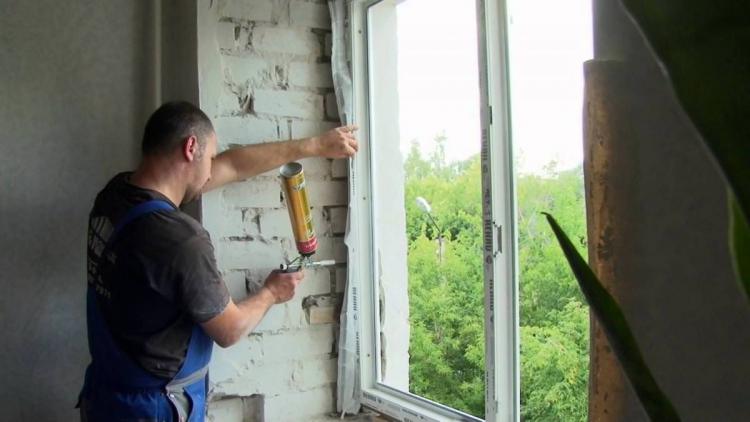
As a result, the window began to blow through, which is the reason for the low temperature of the double-glazed window and the windows begin to sweat. Condensation can be eliminated by removing the cold air source.
Repair work
Carrying out repairs indoors is always associated with wet conditions. Plastering walls, finishing slopes, wallpapering - all this involves the use of water.
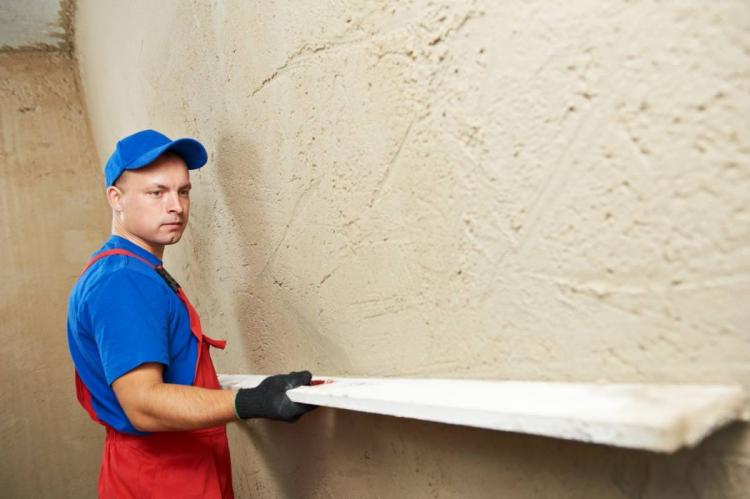
Of course, all these are temporary inconveniences and should be given more attention to prevent fogging of windows. Wipe them more often with a dry cloth, and it is better to make repairs in the warm season.
Condensation has formed inside the double-glazed window
If the condensate formed inside the double-glazed window itself and it froze, there can be only one reason - the structure has been depressurized. In this case, you will have to repair the double-glazed window or buy a new one.
Summing up, we can say that the reason for the appearance of condensate on the windows is mainly the human factor, and not the manufacturing defect of window products. Someone will say - a neighbor and we took windows from the same company, the windows are the same, but they don’t sweat from him, but from us it flows like a hose. Look at the operating conditions.
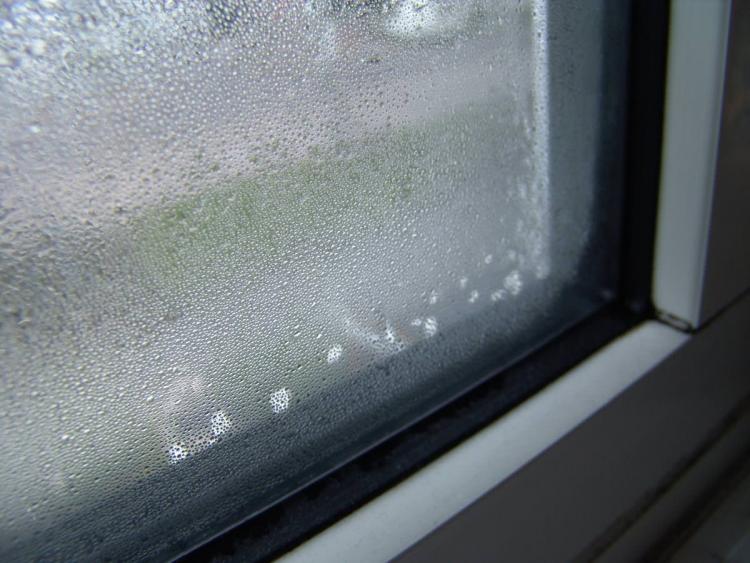
Perhaps the neighbor even sleeps with the window open, but you have never opened it (you are afraid of catching a cold). Maybe your spouse often cooks or the laundry is dried over the stove, and a neighbor has lunch in a cafe or eats chips.
Your family of four lives in a two-room apartment, the apartment looks like a greenhouse from indoor flowers, and your neighbor lives alone in a four-room apartment and doesn’t even have a cactus.
So if you have condensation on the windows, do not rush to change them. After all, when the floor in the room becomes dirty, do you not change it? Contact a window installation company and they will help you find the cause of condensation on the windows and eliminate it.



